89–97 North Street, Keighley, West Yorkshire, BD21 3AA
At the end of the 19th century, ‘first-class, sprung carriages pulled by grays or bays’ were available for hire from the livery stables which stood next to and partly on the site of this Wetherspoon pub. North Street was laid out in 1786, but was not developed until the 1880s, when it was widened and the first of the large imposing buildings was constructed. In the 1890s, this site was partly occupied by a cabman’s shelter at the front and the town hall livery stables at the rear. The stables’ offices were converted into the Regent cinema in 1920, later to become a bingo hall.
Photographs and text about the Livery Stables.
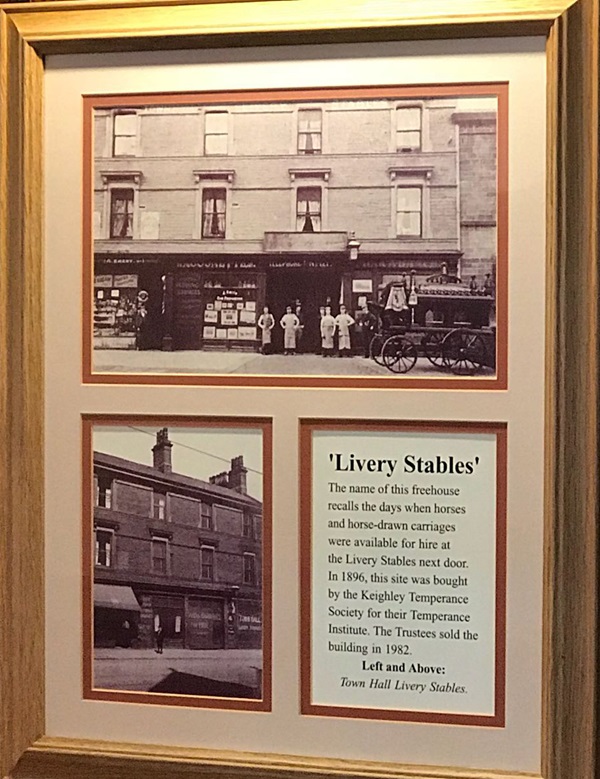
The text reads: The name of this freehouse recalls the days when horses and horse-drawn carriages were available for hire at the Livery Stables next door. In 1896, this site was bought by the Keighley Temperance Society for their Temperance Institute. The Trustees sold the building in 1982.
Left and above: Town Hall Livery Stables.
Illustrations and text about the Bronte family.
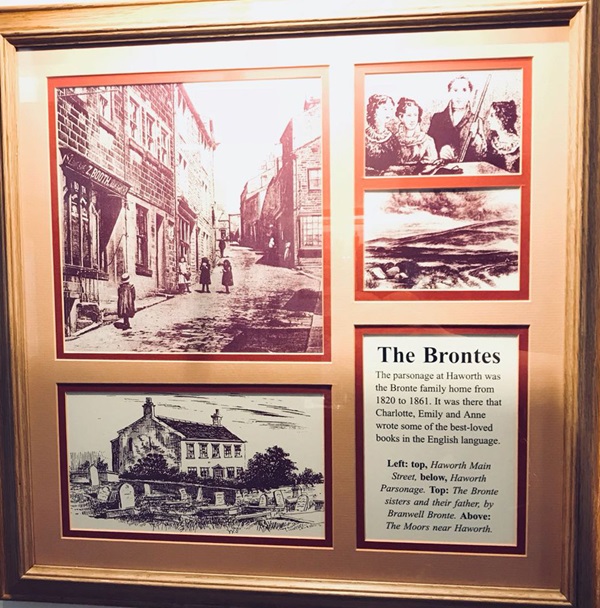
The text reads: The parsonage at Haworth was the Bronte Family home from 1820 to 1861. It was there that Charlotte, Emily and Anne wrote some of the best-loved books in the English Language.
Left: top, Harworth Main Street, below, Haworth Parsonage
Top: The Bronte sisters and their father, by Branwell Bronte
Above: The Moors near Haworth.
Photographs and text about entertainment in Keighley.
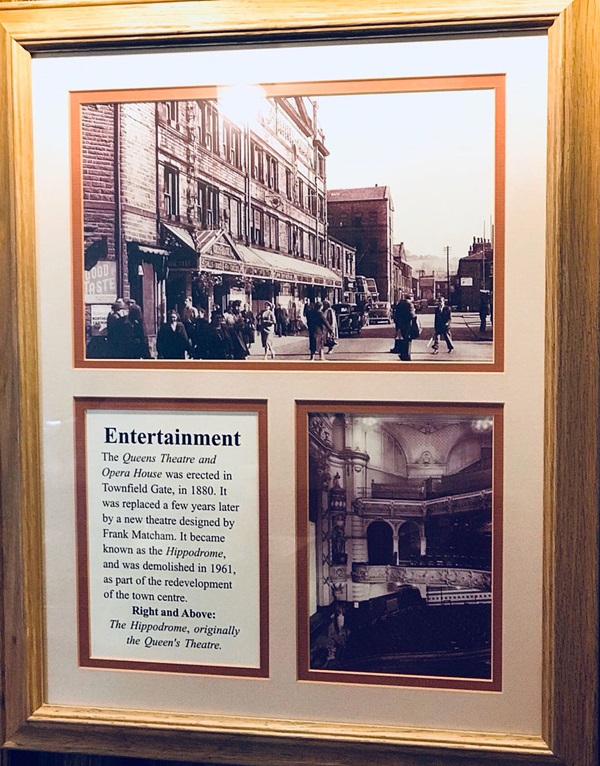
The text reads: The Queens Theatre and Opera House was erected in Townfield Gate, in 1880. It was replaced a few years later by a new theatre designed by Frank Matcham. It became known as the Hippodrome, and was demolish in 1961, as part of the redevelopment of the town centre.
Right and above: The Hippodrome, originally the Queen’s Theatre.
Photographs, illustrations and text about ‘Chichleai’.
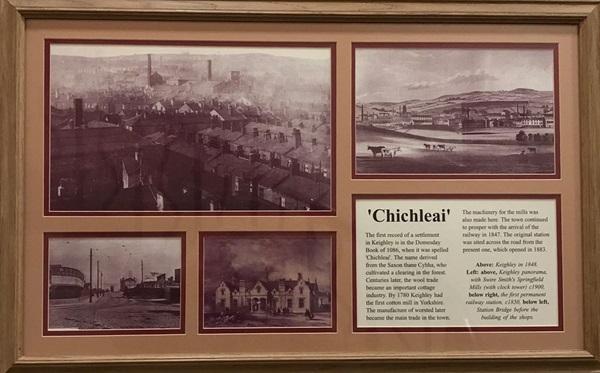
The text reads: The first record of a settlement in Keighley is in the Domesday Book of 1086, when it was spelled ‘Chichleai’. The name derived from the Saxon thane Cyhha, who cultivated a clearing in the forest centuries later, the wool trade became an important cottage industry. By 1780 Keighley had the first cotton mill in Yorkshire. The manufacture of worsted later became the main trade in the town.
The machinery for the mills was also made here. The town continued to prosper with the arrival of the railway in 1847. The original station was sited across the road from the present one, which opened in 1883.
Above: Keighley in 1848
Left: above, Keighley panorama, with Swire Smith’s Springfield Mills (with clock tower) c1900, below right, the first permanent railway station, c1850, below left, Station Bridge before the building of the shops.
Photographs and text about Keighley Library.
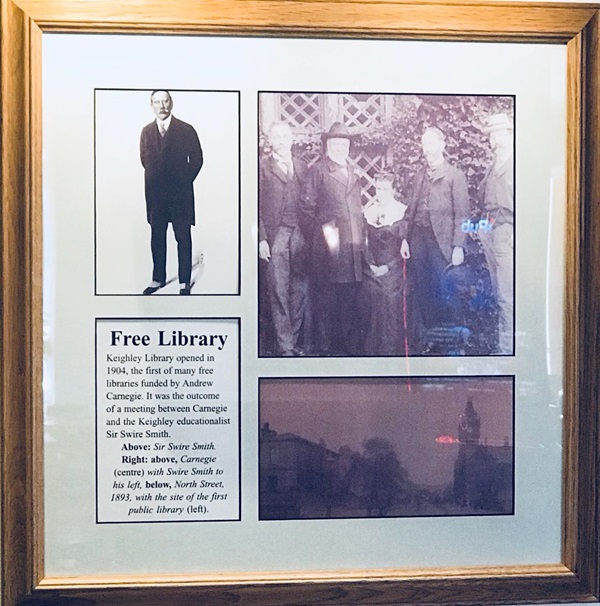
The text reads: Keighley Library opened in 1904, the first of many free libraries funded by Andrew Carnegie. It was the outcome of a meeting between Carnegie and the Keighley educationalist Sir Swire Smith.
Above: Sir Swire Smith
Right: above, Carnegie (centre) with Swire Smith to his left, below, North Street, 1893, with the site of the first public library (left).
External photograph of the building.
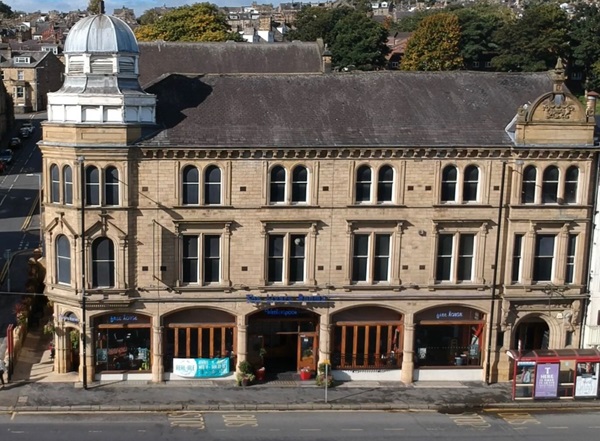
If you have information on the history of this pub, then we’d like you to share it with us. Please e-mail all information to: pubhistories@jdwetherspoon.co.uk